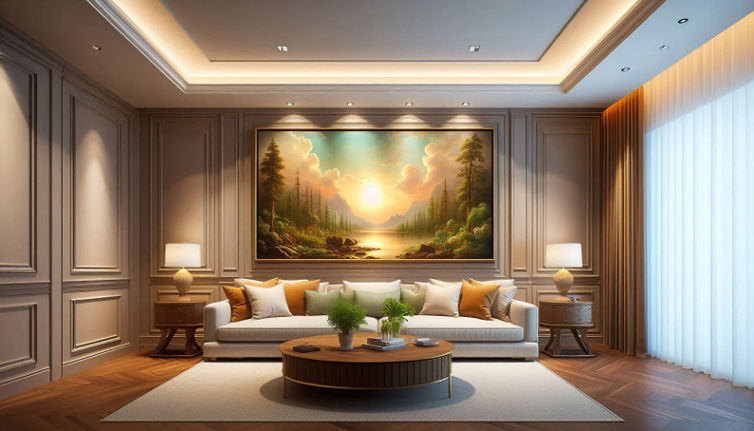How to Use Recessed Lighting to Highlight Art in Your Home

Recessed lighting is an effective tool for displaying artwork in your residence. It can also turn any piece into a focal point and make it look like it belongs to a professional gallery.
The following are guidelines on how you can use recessed lighting to make your favorite artworks more visible:
Choose the Correct Fittings
Go for adjustable fixtures, which help direct light exactly where you want it.
Fixtures with dimming options give you control over its intensity so that art pieces can be highlighted differently depending on the time of day or desired mood.
Select High-Quality Bulbs
Use high-CRI bulbs for an accurate display of colors in your artwork.
LED lights are often recommended because they produce bright, consistent illumination and have long life spans. Avoid yellowish bulbs, as these distort color.
Strategically Position Lights
Mount the recessed lights at an angle towards the work being displayed. Shadowing should be achieved at a 30-degree angle such that every texture and detail is brought out clearly.
Make sure that glare and reflection don’t appear on the artwork.
Create equal Layouts
Uniformity in lighting will be maintained by spacing out housing units equally apart from each other. The space between the units ought to mirror that separating the masterpiece and its source of light.
As such, this ensures similar brightness across the entire composition.
Dim Down Brightness
To match up with all types of pictures as well as mood of the room, install dimmers which adjust enlightening intensity accordingly. A lot of light brings out details, while softer light enhances subtlety.
Play with different configurations until you get everything right.
ALSO READ: 5 Ways Art Elevates the Karaoke Experience in Gangnam
Emphasize Depth And Texture
Texture & depth within paintings can be emphasized through fitted overhead recesses. For textured forms, illuminate specific areas, casting dark shadows on them to make them appear more prominent.
This technique is particularly useful when applied to sculpture and mixed-media canvases.
Avoid Art Light Directly
Aim to position it in such a way that no light falls on your piece. This is because, over time, lighting can be damaging to a work of art.
Instead of this kind of illumination, provide enough uniform indirect light that would draw attention to the artwork piece without causing harm.
Consider image size
Several recessed lights should be used for larger pieces so as to ensure even lighting. On the other hand, smaller artworks may just need one proper fitting.
In relation to the dimensions and proportions of an artwork, decide on how many lights you want to have and where they should go.
Integrate with the room System
It is crucial that you ensure your overhead recesses blend well with other room lights. When done properly, it will help pull out some interesting aspects from your picture without necessarily being too powerful.
Engage a Professional
In case you are uncertain on how best to position or set up your recessed lighting, let alone what type could give you more desirable results for your pieces of art, then consider calling in a lighting designer who can advise you accordingly based on expertise and experience in similar projects.
Conclusion
Recessed lighting is an excellent tool for showing off your artwork while enhancing its appearance at home. To illustrate this aspect correctly, there are options such as appropriate fitting placement and management of power intensity levels, among others.
By adhering to these ideas, any piece can become a stunning focal point, giving rise to a personalized gallery within your living space.


